There is a new food trend that’s bringing back the wisdom of our ancestors and making us healthier than we have been in years! It’s fermentation. Fermented foods are in!
Today people are fermenting everything from chillies, beetroot, garlic, tomato salsa’s, cabbage, kale, carrots, you name it and they are being pickled the traditional way.
Before sugars and salts took over, preservation of our homemade preserves were all done through fermentation.
The most popular fermentation method is lacto-fermentation, utilising whey strained from yoghurt and it makes homemade preserves a total breeze!
More than any other time in history, we now understand the importance of healthy gut bacteria to keep our immune system strong.
Some Amazing Healthy Fermented Foods:
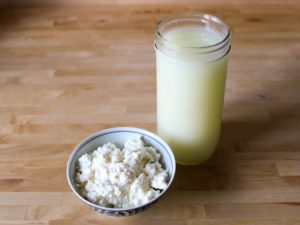
Whey
To strain whey from plain unsweetened yoghurt, take a colander lined with cheese cloth or a paper towel and place it over a bowl.
Refrigerate overnight and in the morning you will have whey at the bottom and thick yoghurt at the top. You can use the yoghurt as you would sour cream. Whey will keep in a jar in the fridge for several weeks.
 Beet Kvass
Beet Kvass
A healing tonic, beet kvass is a health drink full of probiotic bacteria that takes only minutes to make and keeps forever! One dose of this tonic daily and your liver and gut will love you for it!
1 kg beetroot peeled and chunked
1 tbsp Himalayan Salt
Culture starter, such as 3 tbsp whey
3 litres clean water
4-5 litre mason jar
- Place beets in a jar.
- Sprinkle with sea salt and add starter culture.
- Pour in one quart filtered water.
- Allow the the kvass to ferment at room temperature for 48 to 72 hours.
- Strain the beets from the kvass and reserve them for culturing your next batch.
These reserved beets should be good for two to three additional batches and can be consumed on salads. Kvass should be transferred to the refrigerator.
 Kimchi
Kimchi
Kimchi is the native food of Korea. Koreans eat kimchi breakfast, lunch and dinner and will often have a fermentation crock on their front porch with dedicated kimchi refrigerators.
Traditionally, the entire village would come together to make the kimchi over a weekend at harvest to store it for the year.
•1 large Chinese cabbage
• ¼ cup Himalayan salt
• 1 cup Korean red chili powder (coarse gochugaru, available at Asian supermarkets)
• ½ cup fish sauce (make sure the only two ingredients are anchovies and salt for a true fermented version vs. one that includes flavorings like MSG)
• 2 Tbsp natural sugar like rapadura
• 100 gm of fresh ginger, to taste
• 1 large daikon radish (200g), finely julienned
• ½ cup finely diced or slices onion
• 4 bulbs of garlic, peeled, to taste
• ½ cup chopped spring onions
• 500 grams (around 2 packed cups) of grated carrots
• Optional flavors can be lemongrass slices and kefir lime leaves, finely sliced
- Prepare the cabbage:
Wash well and remove the bulk of the core of the cabbage. - Slice the cabbage in half-length ways then cut each piece lengthwise into 3-4 pieces.
- Place cabbage into a large bowl and sprinkle with the salt placing some between the layers of leaves then cover in warm (not hot) water. Let it sit for 30 minutes (can be left for 5 hours)
- In a food processor add the ginger, garlic, fish sauce, chili powder and sugar (lemongrass and kefir lime if using) and whizz into a paste.
- Drain the cabbage when ready and pat dry, then place in a large bowl with the grated carrots and daikon radish then with rubber gloves on mix the paste thoroughly through the layers of cabbage. Squeeze the cabbage as you go to release moisture
- Pack the kimchi very tightly into your mason jar of crock and ensure that all air is removed. There should be a liquid layer on top. Weigh your kimchi down with a liquid fill jar or fermentation weight to ensure your kimchi stays below the liquid line.
- Cover with a dark tea towel and place onto your bench top and leave for at least one week before trying. You can ferment longer to create a sourer kimchi. The sourer the healthier, so you may want to leave it 2-4 weeks. Then place into your refrigerator where it will keep for a good 6 months.
 Lacto-Fermented Garlic
Lacto-Fermented Garlic
If you feel a cold coming on try a clove or two of fermented garlic- they are health crusaders that work! Otherwise use as you would any garlic.
•Loads of garlic, preferably organic, about 5-8 bulbs
•2 tsps dried juniper berries
•2 tsp Himalayan sea salt
•2 tbsp whey (see below)
•1 small mason jar, about 500mls
•Spring water, (chlorine and fluoride free)
- With clean hands, peel the garlic and remove and blemishes.
- Place garlic cloves into a sterilized mason jar.
- Add the juniper berries, salt and whey with ½ cup filtered water and pour over garlic.
- Make sure that the liquid comes at least an inch above the garlic adding more water if necessary. The top of the liquid should be at least an inch below the top of the jar.
- Close lid and keep at room temperature for three days.
- Pop the lid to check to see if fermentation is occurring. It should fizz like ginger beer. If not, store on the bench top for a few additional days. Once active (popping when the lid is lifted and fizzing) it is ready to use. I keep my in the pantry but if the weather is hot, store in the fridge.
They are ready to eat when they are bubbling like champagne. But they will soften and get better with age and will keep for several years if stored in a cool place!
You can find much more information on living a holistic lifestyle in these free magazines and on our YouTube channel.
 Deborah Murtagh – Wholefood Expert
Deborah Murtagh – Wholefood Expert
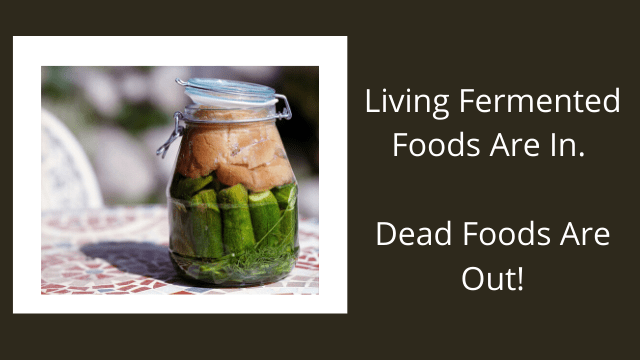
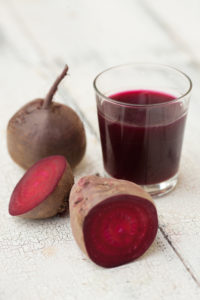 Beet Kvass
Beet Kvass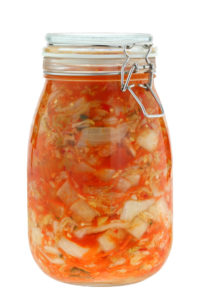 Kimchi
Kimchi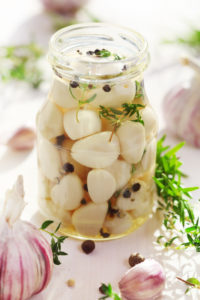 Lacto-Fermented Garlic
Lacto-Fermented Garlic




